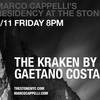Stonewall at 40
Forty years ago, over the course of a late June weekend in New York’s Greenwich Village, history was made by people who were not supposed to have a history, or even a social presence. The young homosexual men, some of them cross-dressers, who violently resisted a police raid on the bar known as the Stonewall Inn, counted for little in the opinion of respectable society. They were regarded at best as pathetic deviants needing Jesus and/or psychiatry, at worst as dangerous perverts to be kept in line by cops and the courts.
Homosexual men and women were supposed to remain on the margins of society, silent and invisible. But when the patrons of the Stonewall Inn resisted yet another of the bar raids that were a depressingly commonplace fact of gay life, they refused silence and invisibility. 
The event now known by the shorthand “Stonewall” was not the first time American homosexuals fought back. (The new and very good Off-Broadway play “The Temperamentals” depicts the founding of the first gay rights organization, the Mattachine Society, during the early 1950s.) But Stonewall was a watershed because it inaugurated a new era of political militancy and community building. “Out of the closets and into the streets!” “Gay Power!” “Gay is Good!” – the new era’s slogans signaled a sea change in the way gay people saw themselves and their place in the world.
What the Stonewall rebels did, though they hardly were aware of it at the time, was to begin to re-write the social contract between the heterosexual majority and the homosexual, and gender-variant, minority, a project that continues today. The political battles for sexual freedom, for anti-discrimination legislation, for partner recognition laws and now same-sex marriage, all have their roots in the Stonewall rebellion.
The “Pride” parades that now take place across the United States and even internationally also owe their existence to Stonewall. The first American gay pride march was held in New York City in 1970, one year after Stonewall.
Today the New York parade is a massive event that attracts a million-plus participants and spectators. It receives support from government and businesses, including major corporations, and the media cover it much the same way they report New York’s various ethnic parades – as an exuberant, colorful celebration.
But the city’s first such event was a march – a political event that mixed protest and celebration – and its leaders and participants mainly were countercultural, New Leftist radicals. And instead of commanding all of Fifth Avenue from midtown to Greenwich Village, as has been the case now for many years, the marchers were restricted to one traffic lane on Sixth Avenue.
If the Stonewall Rebellion is the watershed event of the modern gay liberation/gay rights/LGBT movement, it also has a place in Italian American history. But it’s not a history likely to generate much in the way of pride. The Stonewall Inn was owned and run by Italian American gangsters, who were not, to use today’s parlance, especially “gay-friendly.” Under their management, the Stonewall was a shabby dive that served its patrons overpriced, watered-down drinks and a lot of condescending to outright nasty attitude.
Mobsters thrived on illicit enterprises such as gambling and prostitution, so it’s not surprising that, in the pre-liberation days, they owned gay bars and bathhouses. Nick Tosches, in his biography of Dean Martin, Dino: Living High in the Dirty Business of Dreams, reported that mobster Vito Genovese, “the most violent, most grasping, and most treacherous of his breed,” owned drag queen bars and was married to a lesbian.
In its coverage of the rebellion, the Village Voice interviewed the Stonewall managers, all of whom, according to the reporter, offered variations on a theme: "We are just honest businessmen who are being harassed by the police because we cater to homosexuals, and because our names are Italian so they think we are part of something bigger."
David Carter, in his 2004 book, Stonewall: The Riots That Sparked the Gay Revolution, revealed that the Stonewall was owned by “Fat” Tony Lauria, a gangster whose father was also a mob figure.
But the intertwining of gay and Italian American histories hardly is limited to the Mafia’s control of gay bars and bathhouses. Historian George Chauncey, in his groundbreaking 1994 book, Gay New York: Gender, Urban Culture, and the Making of the Gay Male World, 1890-1940, unearthed a thriving homosexual subculture among Italian immigrants in New York City.
“Fairies,” the prevailing designation for homosexuals whose effeminacy was a public declaration of their orientation, constituted a colorful thread in the social fabric of Italian immigrant communities. Chauncey noted that Italian sections of Manhattan’s Lower East Side had numerous saloons where fairies congregated.
These “obvious” homosexuals generally sought sex partners not among their own ranks but among butch same-sexers, and heterosexual men. Italian men interacted with “fairies” more readily than did Jewish immigrants, and were more likely to respond to their sexual advances. A 1921 study of men arrested for homosexual behavior stated that “the Italians lead” in the number of arrests. “At a time when the numbers of Italians and Jews in New York were roughly equal, almost twice as many Italians were arrested on homosexual charges,” Chauncey observed. “More significant is that turn-of-the-century investigators found a more institutionalized fairy subculture in Italian neighborhoods than in Jewish ones.”
For my partner Rob and I, “Pride Weekend” means celebrating not only Stonewall and its legacy, but also Rob’s birthday and our anniversary. We began our relationship 28 years ago, on June 27, 1981, and every year since, the last weekend of June has been our own triple-header holiday. As we stood outside Madison Park on Fifth Avenue watching this year’s parade go by, our friend Miguel reminded us about the event the three of us had attended nine years earlier, in Rome.
World Pride Roma 2000 brought hundreds of thousands of Italian and foreign same-sexers and transgenders into the streets of the Eternal City, along with a surprising number of supportive eterosessuali. Though the Vatican and its political allies – mainly but not solely right-wingers – strenuously tried to prevent World Pride Roma from occurring, it was a great success, a much-needed morale booster for Italy’s small and weak gay movement. When Rob, Miguel, and I met up with Salvo, a friend of ours from Sicily, he told us, with tears in his eyes, “You have no idea what this means to us.”
Nine years later, Italy’s movement is more assertive and better organized; it has a somewhat higher profile in Italian society and has helped change public opinion to a more favorable view of same-sexers. But in terms of anti-discrimination law and same-sex partner rights, Italy lags far behind other Western European nations. Compared to France, Spain, Germany, the Netherlands, the United Kingdom, and Scandinavia, Italy is stuck in the 1950s. More distressingly, violent homophobic rhetoric and actual physical violence against gays, lesbians, and transgenders is all too common.
Italy still awaits its Stonewall.





































i-Italy
Facebook
Google+
This work may not be reproduced, in whole or in part, without prior written permission.
Questo lavoro non può essere riprodotto, in tutto o in parte, senza permesso scritto.